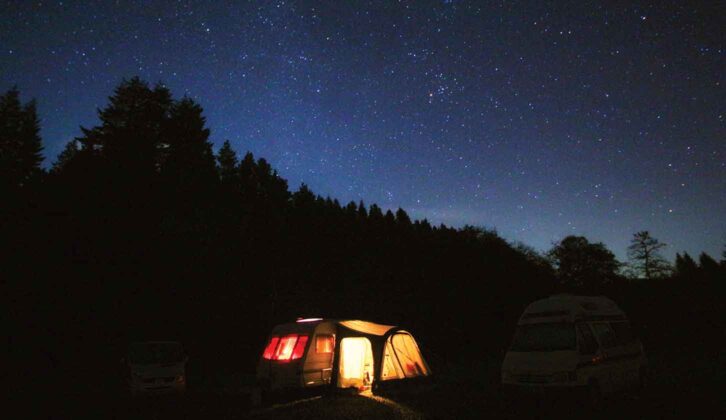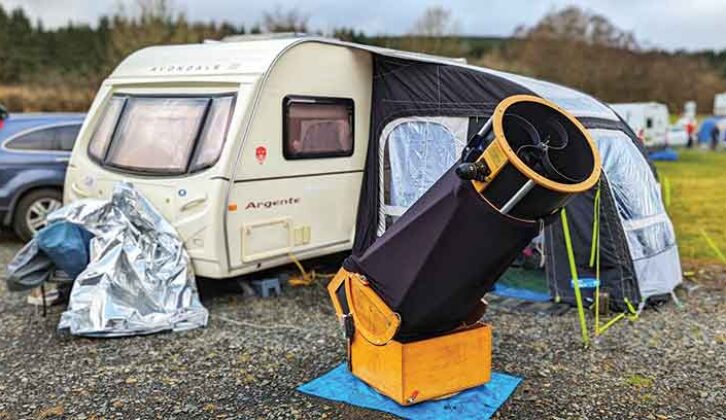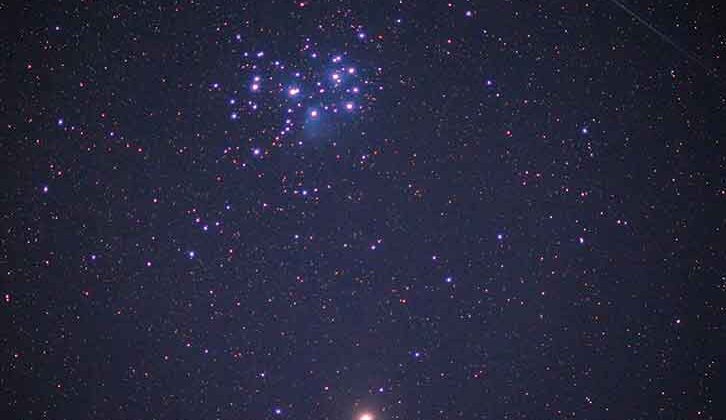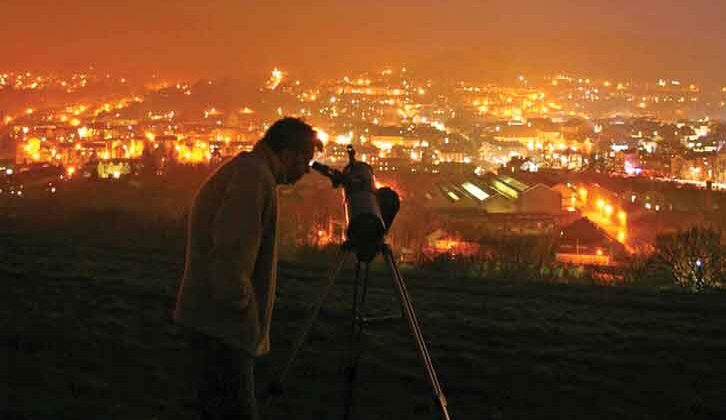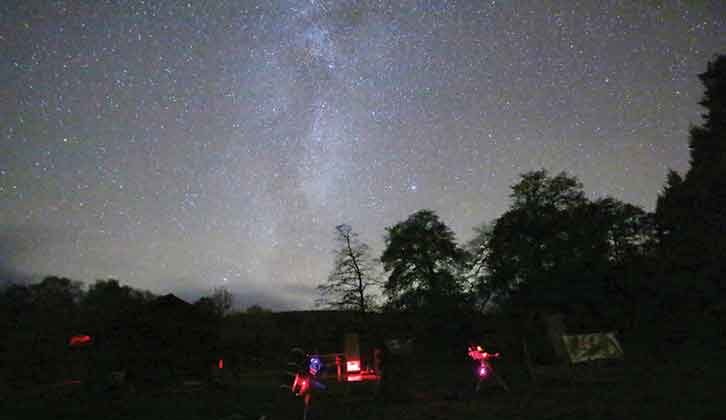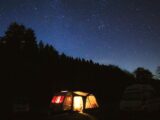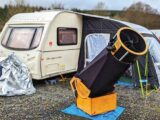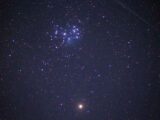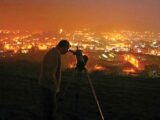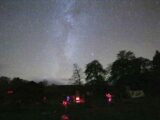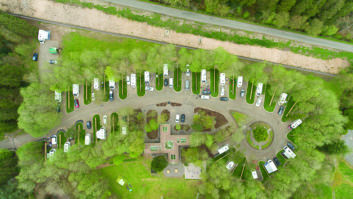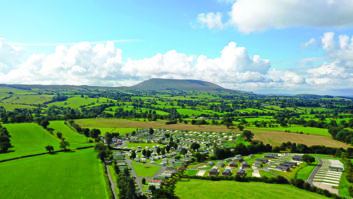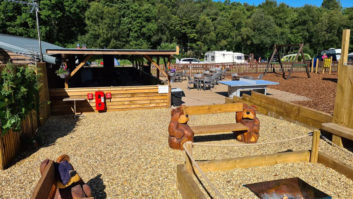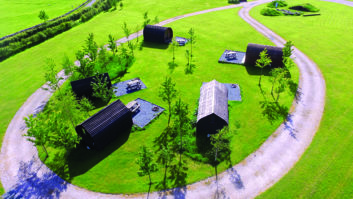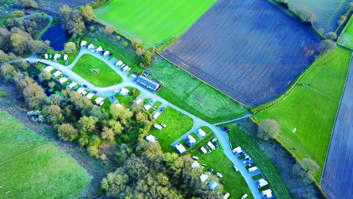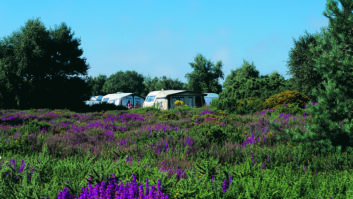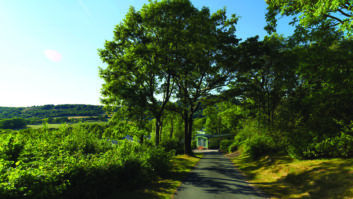I am an amateur astronomer and science writer living in Kendal, in the Lake District. This is a beautiful part of the world, but like many places in the UK, it has a serious light pollution problem. On a (rare) clear night, I can barely see much more than the Moon, a couple of bright planets and perhaps a few dozen stars. So when my partner Stella and I, and our cat Jess, go away on tour, we choose a campsite based somewhere remote and as far away as possible from light pollution. Several times a year, we leave the crowds behind and head north, to a Star Camp.
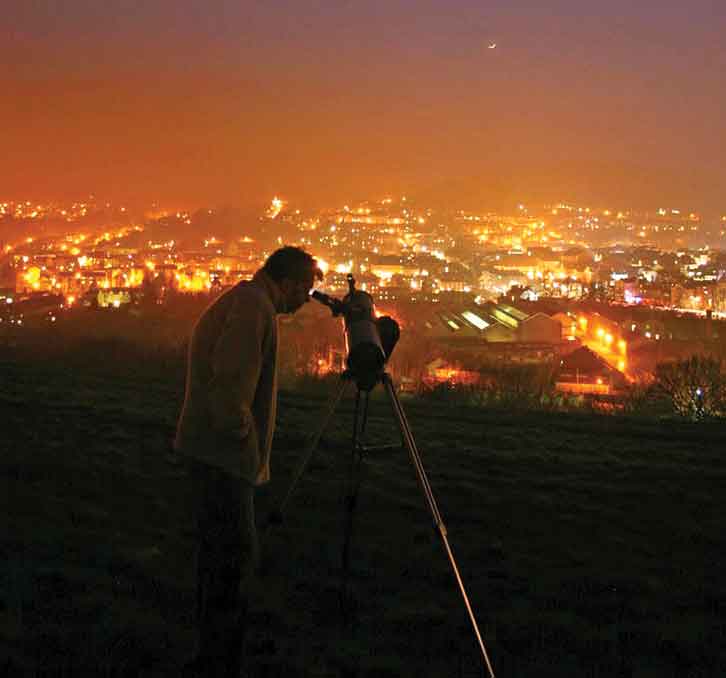
These are special events held by and for amateur astronomers who want to get away just to look at the stars for a few nights. Star Camps are usually at remote locations, as far from any light pollution as possible. Participants take telescopes, cameras and other equipment to use under a sky that is much darker than the one they usually observe at home.
During the day, there are lectures, presentations and workshops, and then after sunset – so long as it is clear – everybody heads outside, pulls the covers off their telescopes and spends the night enjoying stunning views of the stars, galaxies and clusters that they are normally unable to see in the bright mandarin-orange glow of the skies above their homes.
There are now many different Star Camps taking place during the year, but the one we visit most is held at our favourite location in the whole country and ideal for stargazing – Kielder Campsite, in Northumberland.
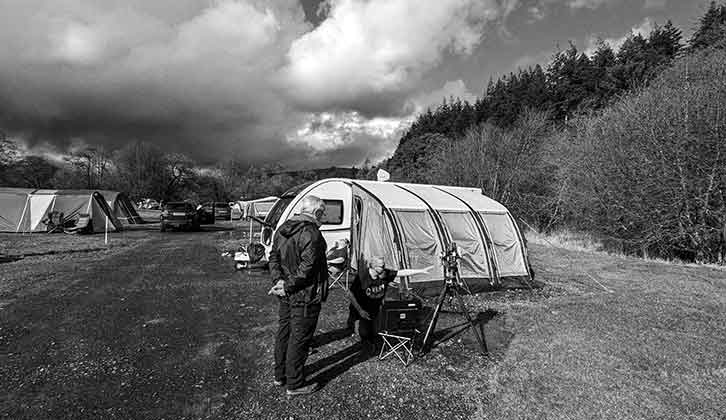
Kielder Star Camp
Kielder Campsite is one of the most remote sites to be found in the whole country – a narrow wedge of green squeezed in between a fragrant pine forest on one side and Kielder village on the other.
A river snakes through it, spanned by a creaky bridge that leads to the facilities block, some heated pods with decks, and the office of nothing-is-too-much-trouble site manager Steve.
Then there’s the special Warm Room, where frozen skywatchers can retreat to socialise and listen to talks during the day, and thaw out on long frosty nights.
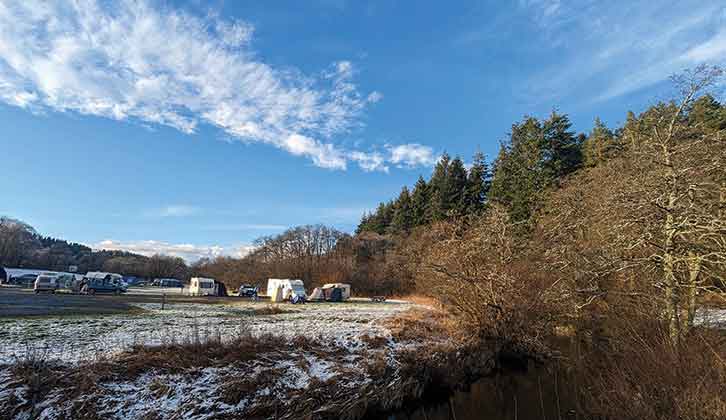
Attending a Kielder Star Camp is not really for the faint-hearted, impatient or lazy. The nearest shops are half an hour’s drive away, so there’s no “just popping into town” for a burger or more beer.
In addition, the weather here can be both beautiful and foul – on the same day – and when it rains, it will do so like something out of a disaster movie (Kielder reservoir doesn’t fill up by magic!). The rain can often last for days, which means Star Campers squelching their way home without seeing a single star.
Mobile phone reception is most charitably described as ‘unreliable’, so if you’re somebody who can’t go for 10 minutes without checking social media, you might find yourself struggling. Personally, I find being cut off from publishers and editors one of the best things about being there! We go to Kielder simply to go to Kielder, and if Nature manages to provide us with a clear night or two for stargazing, well, that’s a welcome bonus. This is our sanctuary, where we can shuck off the real world and spend a few days chatting with friends, walking in sunshine (or drizzle), gulping in lungfuls of that clean Northumbrian air and just… living.
Darkness beckons
When darkness falls at a Kielder Star Camp, you can sense an almost reverent hush descending on the site. Curtains are pulled shut, porch lights turned off and astronomers emerge from their tents, caravans and motorhomes like bears leaving hibernation, ready to enjoy some stargazing at Kielder.
Soon it looks as though the site has been invaded by fireflies, as, guided only by the dim light of their torches and head lanterns – covered with red film to preserve night vision – the stargazers set up their equipment. The only sounds are the gurgling of the river and the gentle whir of motors as the numerous telescopes slew round towards their first targets of the evening. The stargazing has begun in earnest at Kielder.
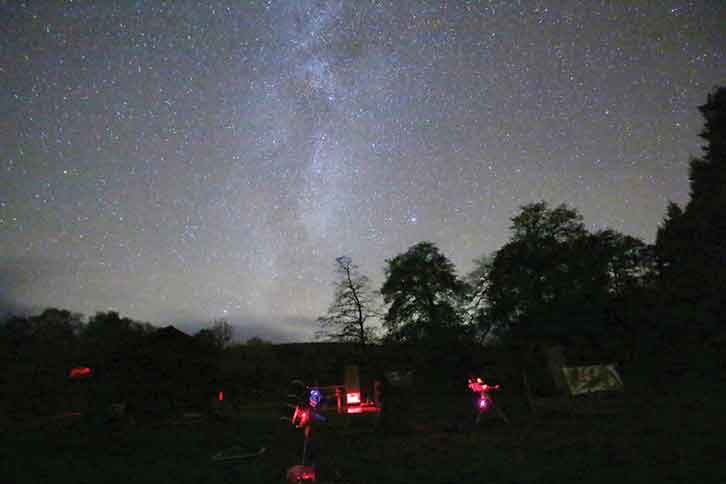
If the sky is clear all night, we stay out all night; there’s no point going all that way, with all that gear, if you’re going to bail early.
Some people tuck themselves away in quiet corners, dedicated to observing or photographing a special few celestial sights, and really don’t want to be disturbed, which everyone respects. But most Star Campers are happy to share their telescope’s views with others.
One of the many joys of being at a Star Camp is just wandering around in the darkness, guided by your red torch, and asking that shadowy figure hunched over a telescope: “What are you looking at? Can I see?” then peering into an eyepiece to obtain a jaw-dropping view of a galaxy or a star cluster that is lying thousands or even millions of light years away.
If the cold gets too much when stargazing – and on a chilly, damp night, Kielder can be covered in so much hoarfrost, it looks like a scene from Frozen – we retreat to the Warm Room to wrap our numbed fingers around cups of tea or mugs of soup, and chat with other stargazers for a while, before pulling on our gloves and heading back out to look at the stars again.
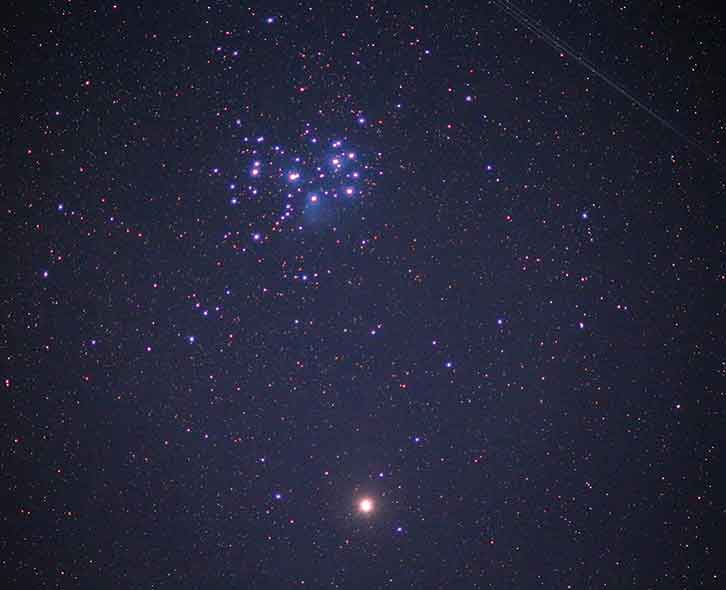
But I haven’t just observed stars from our campsite at Kielder. In the 10 years since we first drove through its gates and were warmly welcomed as complete Star Camp newbies, I have been privileged to spot:
- Shooting stars skipping across the sky, some flaring so brightly, they lit up the whole campsite as they fell behind the trees…
- The Milky Way so clear and bright, it looked like smoke rising up from a forest fire…
- Venus shining so brilliantly in the evening twilight that it cast shadows on the ground…
- The Northern Lights painting the expanse of the Northumbrian sky with swirls of vivid green and searchlight beams of red.
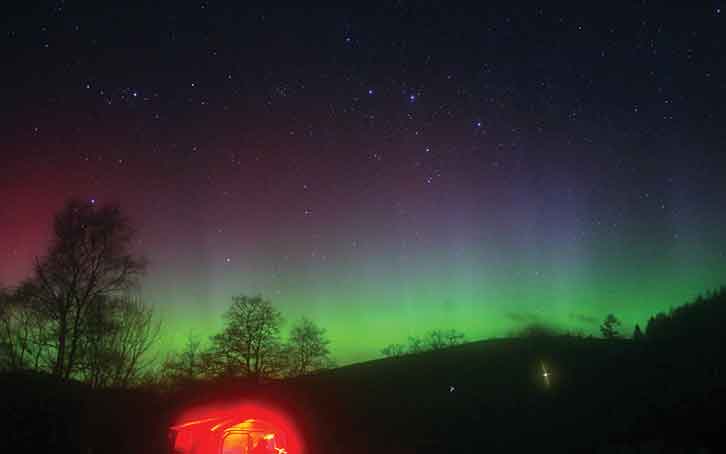
When our stay at the Star Camp is over, it’s always a bit of a wrench to leave Kielder. As we turn back onto the main road and head south, it feels as though we’re leaving a piece of ourselves behind. But we know that we’ll be back again in a few months, to spend more precious nights under its gorgeous starry skies.
Just look up!
However, you don’t have to travel to a Star Camp, or even know anything about astronomy, to stargaze when you are on your next tour. All you have to do is wrap up warm, head out on a clear night and find somewhere suitable for stargazing. There will be somewhere on your site (check out our best caravan site guide if you’re looking for somewhere to head to for your next tour) away from the lights that will let you observe the stars – but always check in advance that it’s safe to do so and you are permitted to be there.
At first you’ll see only a few bright stars, but give it 20 minutes or so and your eyes will adapt to the dark – then you’ll see many more, which is a thrill.
It’s even more exciting when you understand what the stars are. When you’re looking (safely!) towards the Sun in the daytime, you’re seeing a star, because the Sun is simply the closest star to Earth. All the stars you see in the sky after the Sun has set are also suns, but they are so far away, their light takes dozens, hundreds or even thousands of years to reach us and they are reduced to mere pinpricks in the sky.
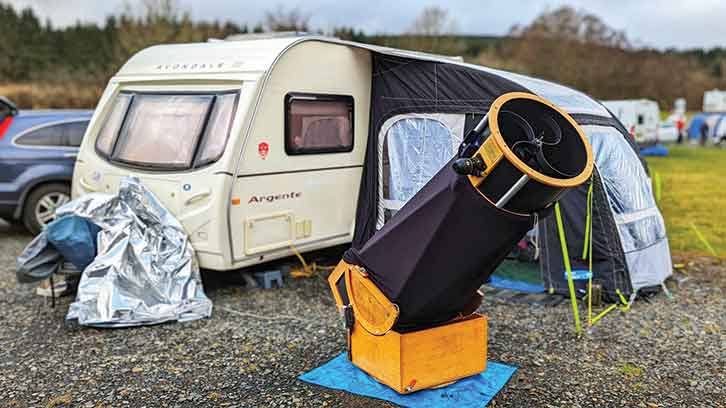
As your eyes adapt to the darkness, you’ll see that the stars make patterns or shapes in the sky. You might even recognise one or two, such as the Big Dipper or Orion. These shapes are called constellations, although the Big Dipper (aka the Plough) isn’t a constellation, it’s an asterism: a small, obvious-to-the-eye shape within a constellation.
The Big Dipper is part of the constellation Ursa Major, the Great Bear, and if you are at a dark site, you’ll also be able to see the fainter stars that make up the bear’s head and legs.
If you spot a particularly bright star, the chances are it’s a planet. You can tell stars and planets apart quite easily just by looking at them for a few moments – if a bright light is twinkling, it’s a star, but if it’s shining with a steadier light, it’s a planet. Venus is sometimes an Evening Star, visible in the west after sunset, and at its best, it’s far brighter than any star in the sky.
If you’re lucky, you’ll see a shooting star dash across the sky. These aren’t stars at all, they’re actually tiny pieces of space dust burning up in the atmosphere.
At certain times of the year, we can observe more shooting stars than usual, in a meteor shower. The best are in mid-August, late October and mid-December.
And if you spot a very bright star moving very slowly across the sky, that’s the International Space Station!
Get focused
If you want to know what else you can see in the night sky, there are loads of apps for your phone or tablet which will be your guides. Using GPS, they show you a map of the sky with all the stars, constellations and planets on view and labelled. You don’t need to be connected up to Wi-Fi to use them, either.
If you have a pair of binoculars, they will show you some wonderful sights, such as the moons close to Jupiter, Venus as a crescent, and the mountains and craters of the Moon. Sweep them across the sky and you’ll see glittering star clusters and misty nebulae.
The best size of binoculars for stargazing are 7x35s or 10x50s. More powerful ones are pretty heavy, so will need a tripod to support them.
Now, next time you’re out and about, don’t hurry inside after your day’s adventures. Go outside and look at the stars. They are as beautiful as any picturesque ivy-covered cottage or grand castle – and unlike those, they are completely free to enjoy!
Check out our guide to the best caravan parks in the Lake District if you’re looking for another beautiful part of the country to visit.
Find out more about stargazing at Kielder Forest
If you’ve enjoyed reading this article, why not get the latest news, reviews and features delivered direct to your door or inbox every month. Take advantage of our brilliant Practical Caravan magazine SUBSCRIBERS’ OFFER and SIGN UP TO OUR NEWSLETTER for regular weekly updates on all things caravan related.
